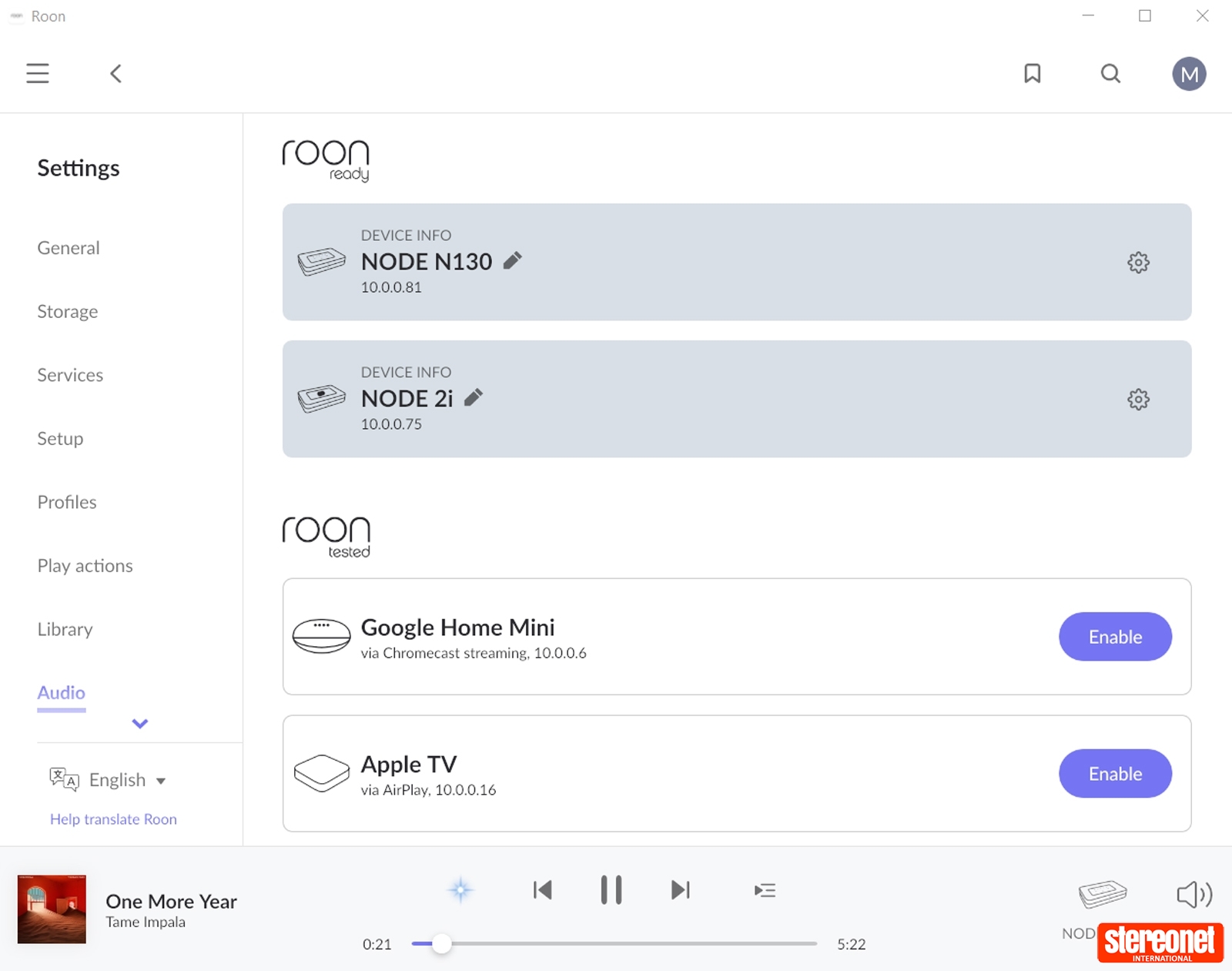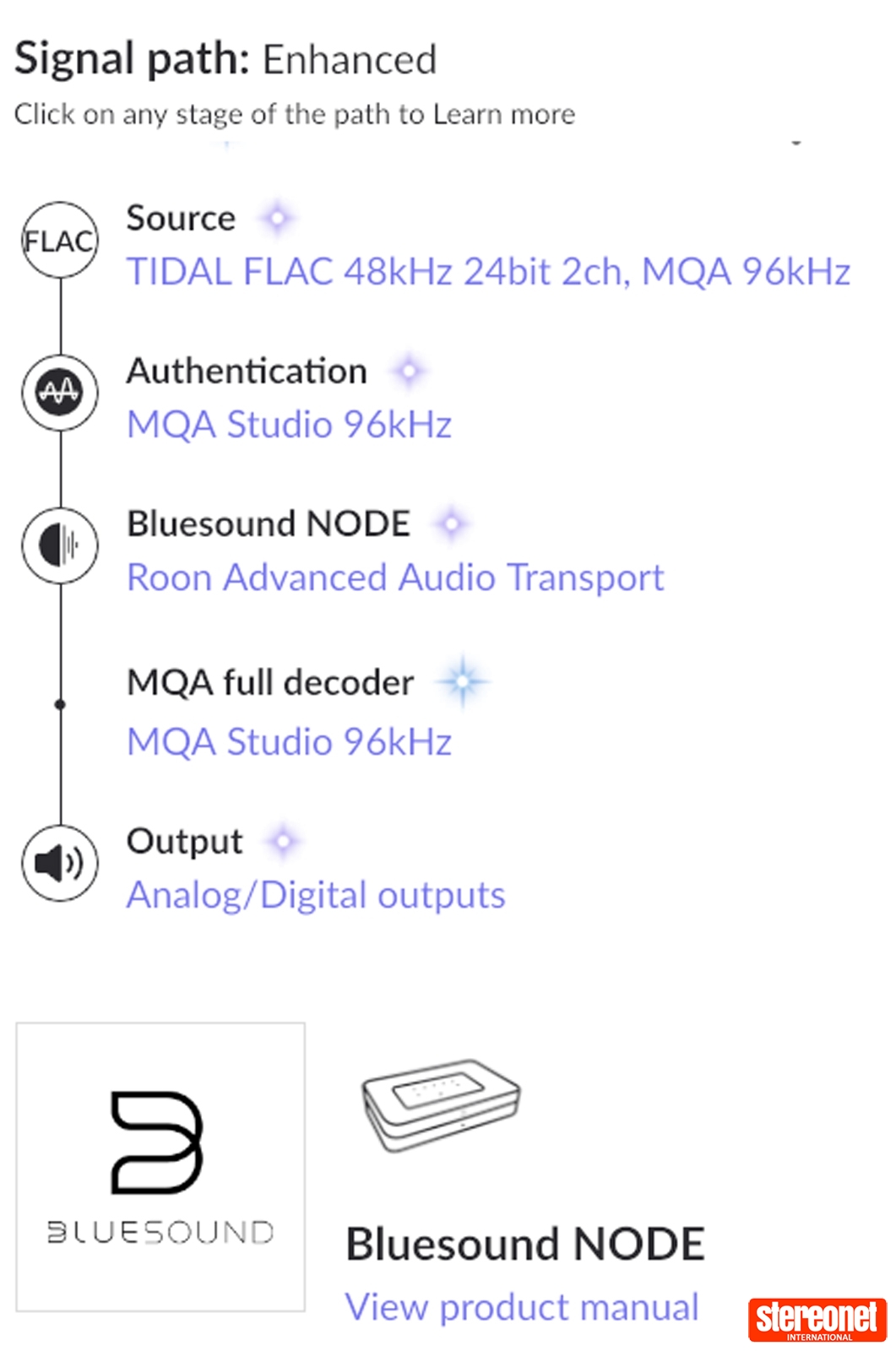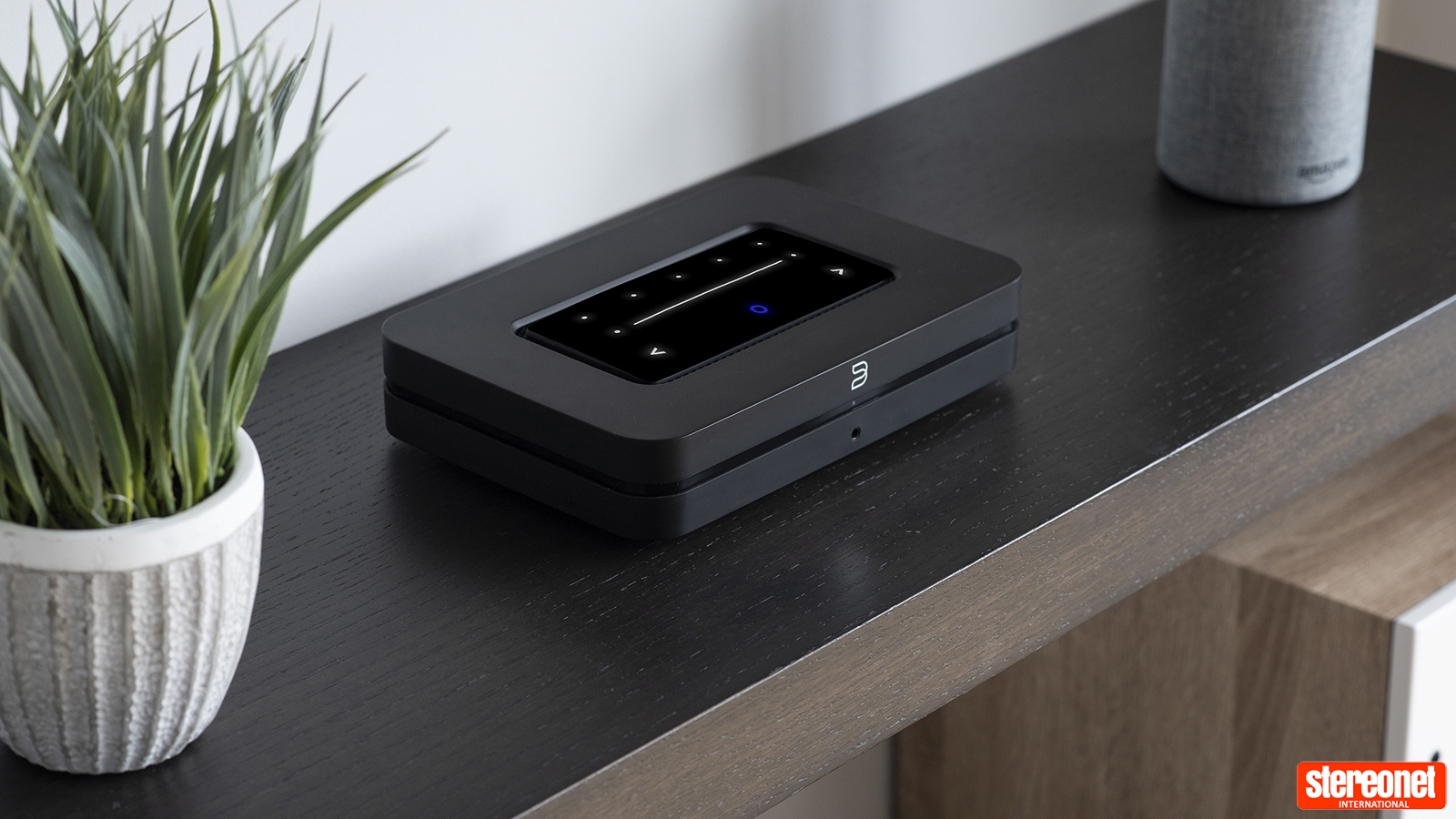Bluesound NODE N130 (2021) Wireless Multi-Room Streamer Review

Mark Gusew is seriously impressed by the latest version of this iconic network DAC…
Bluesound NODE N130
Wireless Multi-Room Streamer Review
AUD $999 RRP

Bluesound's successful NODE 2i has had a makeover and been renamed, simply, NODE. The company's internal designation for the new unit – useful for differentiation and customer support – includes the N130 version number, and I've also seen it referred to as the Gen 3 NODE. From a design and internal processor perspective, this is correct, but it's actually the fourth NODE model released. Anyway, whatever you want to call it, here it is!
The price is unchanged at $999 (in Australia), and you'll have to look closely for the differences between the older 2i and the NODE, as the shape and external dimensions are both the same. But the devil, as they say, is in the detail, so I asked Bluesound's product manager Matt Simmonds to tell me more.
Our core value is audio performance. From the beginning, our aim was to show people that hi-res listening could be convenient, modern and available. And over the years the NODE has become the benchmark performance standard for the category. Still, we wanted to push that even further, so we set out to improve the audio performance and feature set wherever possible.
This review focuses on those improvements, and the sound quality of the new design, rather than detailing how it works, as it's operationally very similar to the outgoing model. This is already well documented in our previous reviews and has received the coveted StereoNET Applause Award winner. The BluOS software is unchanged. Read the Bluesound Node2 and Bluesound Node2i reviews.

UP CLOSE
The most obvious external difference is the significantly larger touch control panel on the top of the unit, now made of glass with proximity sensors and five handy preset shortcuts. It's about three times larger than the old one and is much nicer to use. The NODE is still available in either white or black, but the finish is now in an attractive matte satin and should be easier to clean.
Around the back is a new HDMI e-ARC input for improved integration with a TV or home theatre system, especially when the subwoofer output is utilised. Also new is a USB out digital connection that is not yet enabled at the time of release but will come via a firmware update in the future, we're told. This will let those wanting to utilise an external USB DAC connect to the NODE, bypassing its internal DAC and providing an alternative to the existing S/PDIF TOSLINK or coaxial digital outputs.
Most of the hardware changes to the new NODE are found internally, and begin with the power supply. Matt Simmonds continued:
We simplified the design, with fewer and better parts, marking an improvement over the previous model. We know that power supply improvements can improve the overall audio performance of a product.

The internal DAC has also been revised. The NODE uses a Texas Instruments PCM5242 32-bit/384kHz DAC with a slightly lower claimed signal-to-noise ratio. Bluesound engineers have implemented a differential DAC design that reduces unwanted noise and distortion while increasing dynamic headroom. As before, it will happily unfold MQA streams.
The new “brain” is a powerful quad-core 1.8GHz ARM Cortex A53 processor, which in theory provides eight times the computational power and four times the memory speed. Matt explains:
There are intrinsic audio performance improvements by implementing a better processor platform properly, as the increases in speed and efficiency can cut down on digital jitter, keeping signals cleaner and overall audio pathways neat and tidy.
Although the sheer processing grunt isn't necessarily required today, Bluesound is, “ready for the possibility of new technologies that may not even be known about today, which often require lots of horsepower.”

To set up a brand new device, I connected power and an Ethernet cable into the NODE and used the existing BluOS app on my Samsung tablet to find the new device in a matter of seconds. I renamed the device to my liking, and it asked to check for firmware updates, which it found and spent the next five minutes applying. After the update, I set up the Wi-Fi by going into Settings > Player > Wi-Fi, and it found my SSID and asked me for the password. Really, very simple. You can dim the indicator lights, set up tone controls, wake-up alarms, set a sleep timer and customise your sources and much more. The NODE reboots in under fifteen seconds, compared to around twenty seconds for the older 2i, and responds very quickly to instructions.
For the review, I used a Leema Acoustics Quasar integrated amplifier, using Inakustik NF1204 Air Referenz interconnects, connected to JBL HDI-3800 loudspeakers to compare both old and new model Bluesound NODEs. I used both Tidal and Qobuz premium streaming services.

THE LISTENING
The good news is that the new NODE is still an excellent sounding streamer that overachieves at its price point. Bluesound has refined the existing excellent sounding NODE 2i to a slightly higher performance level, but you have to go looking for it. As a playback device, it performs at a more than satisfactory level, but if used as a transport and sending the digital signal into a high-quality DAC, it performs well above its pay grade.
The NODE doesn't try to edit the sound, with everything sounding intact, and achieves a nice overall balance, if a touch cool in feel. Midnight by Brian Culbertson was reproduced with the bass and kick drum laying a well defined and punchy foundation to the track. The guitar, piano and saxophone added layers that were reasonably well fleshed out. This was impressive, but in my view can't quite match the best CD players at the same price point – but then the NODE can do so much more…
Using the supplied power and RCA cables, I couldn't easily discern any clear differences between the new and the old NODEs, as they're extremely similar-sounding – and pretty much close enough to not matter. It's only when you change the cables to higher quality ones that small traits are discernible, but those may end up costing you the same price as the product itself. With better interconnects, the frequency extremes are represented more faithfully through the new model. For example, kick drums have a deeper and punchier thud, with the lower octaves showing extra weight. The sound is also more vivid, with a slightly more expansive soundstage.

The NODE has enough resolving ability to make sense of complex tracks. I listened to the hi-res version of I'll Be Gone with the vocals of Norah Jones and Mavis Staples and enjoyed hearing each of them as separate and distinct voices rather than being served mashed potatoes whenever they were singing together.
It also doesn't go to pieces when reproducing classical music with acoustic instruments. Bach's The French Suites with Murray Perahia at the piano was nicely transparent, with each note distinct and resolved with a reasonable sense of space. The track is a Tidal MQA studio enhanced 24/96kHz, and the Bluesound NODE plays and resolves all MQA files in full decoder mode. Roon reports that the signal path is enhanced as the NODE does the unfolding, authentication and rendering steps.

The NODE is a good timekeeper, one that's capable of maintaining a good pace and allowing music to sound natural and alive. Listening to Sound and Colour by Alabama Shakes was no imposition, with the percussion right on point. There was good speed to the delivery, so most genres sounded nice and tracks that are percussive and repetitive are fun to listen to. Do I Wanna Know? by the Arctic Monkeys was replayed with big swings in volume, and a thumping bass line that shook my room.
Spatially, the NODE also does well. The live version of Breezeblocks by Alt-J produced fine depth perspective, with the audience further away in the background and instruments closer up – just as it should be. Recordings with great spatial width were well carried too, with Paper Tiger by Beck getting a panoramic soundscape that stretched well beyond the physical positioning of my loudspeakers.

Getting serious by using the NODE as a transport only, I connected it to my Burson Audio Composer 3XP powered by a Ferrum Hypsos external power supply. It delivered thrill beyond most people's expectations of products at this price. Listening to the same tracks over and over again was a delight, with the sound coming from a quieter, blacker background. Speed, dynamics, tonal accuracy and detail retrieval all improved, too. Naturally, such benefits are limited by your choice of DAC and your own system. Still, the big takeaway from this experiment was that the NODE is a very capable device, with a ready upgrade path available.
Comparing the new NODE vs the NODE 2i using the digital out was interesting. It's pretty similar to the sound of the analogue out, inasmuch as it's not night-and-day, but there are subtle gains to be had. The new device has a more explicit soundstage with better centre fill and extra presence and immediacy. Bass is slightly deeper and seems to have more thump, which is more noticeable on full-range loudspeakers.

CONNECTIVITY
The new NODE features two way aptX HD Bluetooth connectivity so that you can, for example, stream from a mobile device to the NODE, or you can send the music to another Bluetooth device like a set of headphones. As expected, the connection was faultless, with almost instant pairing and very decent sound.
For many users, letting Roon control their music library is heavenly. I'm happy to report that the NODE was found as an endpoint almost instantly and worked like a dream. Control over the Roon playlist is automatically included in my tablet's BluOS app, adding to the usability and keeping it simple and uniform to use. Using the eARC HDMI input was trouble-free and straightforward, adding to its already impressive repertoire of accomplishments. I made this input “Auto Sense” active in the settings to automatically change to this input when a signal is detected.

The touch controls are now easier and more reliable to use. As you get close to the NODE, the proximity sensors light up the top panel, and now the button you touch glows to confirm that it has been pressed. By comparison, the 2i was a more hit-and-miss experience. The five programmable presets are a handy inclusion, and easily configured in the 'My Presets' menu in the BluOS App. A preset could be a streaming service, or radio station, playlist, podcast or a favourite song.
The sheer versatility of the NODE and BluOS is something to behold, from the vast array of streaming services – that I have not as yet seen bettered by any other operating platform – to the availability of voice assistants like Apple's Siri, Amazon Alexa, or Google Voice. Oh, and don't forget the full integration with most of the popular smart home automation platforms. Connecting two or more NODEs or perhaps adding a POWERNODE (with built-in amplification) within the same Wi-Fi zone allows you to play music anywhere that has a power socket, making entertainment a breeze.
You can also program the NODE to recognise your existing IR remote or to use the optional Bluesound RC1 controller. Having a remote allows one to quickly skip tracks or change the volume without the need to reach for and unlock a smartphone/tablet, making it very convenient.

THE VERDICT
 There are two distinct parts to a music streamer – the software and the hardware. The BluOS software and ecosystem are, to my mind, the best out there; with many years of continual updates, the sheer breadth of what it can control is incredible. I wish that more manufactures used software even half as accomplished, with some already licensing the technology. It is very stable, intuitive and easy to use. Being Roon compatible is the icing on the cake.
There are two distinct parts to a music streamer – the software and the hardware. The BluOS software and ecosystem are, to my mind, the best out there; with many years of continual updates, the sheer breadth of what it can control is incredible. I wish that more manufactures used software even half as accomplished, with some already licensing the technology. It is very stable, intuitive and easy to use. Being Roon compatible is the icing on the cake.
The hardware is built to a budget yet can produce a highly satisfying musical experience. If you already own a NODE 2i, I wouldn't be rushing out to update my unit, expecting the new NODE to blow the old one away. It is a valuable update but not significantly better – more evolution than revolution, you might say. It is a platform that will evolve over time with enough processing power to accomplish far more, potentially.
I see the NODE as being versatile enough to satisfy two types of users. It fits the bill perfectly for those looking for a simple to use, versatile, jack-of-all-trades streamer that forms the basis of a multi-zone home entertainment system. Those chasing pure sound quality will like it, but connecting it to a high-quality external DAC is the preferred option here. Either way, you may be amazed by the value of this technological marvel.
For more information visit Bluesound
Mark Gusew
Starting his first audio consultancy business in the early ’80s whilst also working professionally in the electronics industry, Mark now splits his time between professional reviewing and AV consultancy.
Posted in:Hi-Fi Sources Streaming Applause Awards 2021
Tags: bluesound convoy
JOIN IN THE DISCUSSION
Want to share your opinion or get advice from other enthusiasts? Then head into the Message Forums where thousands of other enthusiasts are communicating on a daily basis.
CLICK HERE FOR FREE MEMBERSHIP
Trending
applause awards
Each time StereoNET reviews a product, it is considered for an Applause Award. Winning one marks it out as a design of great quality and distinction – a special product in its class, on the grounds of either performance, value for money, or usually both.
Applause Awards are personally issued by StereoNET’s global Editor-in-Chief, David Price – who has over three decades of experience reviewing hi-fi products at the highest level – after consulting with our senior editorial team. They are not automatically given with all reviews, nor can manufacturers purchase them.
The StereoNET editorial team includes some of the world’s most experienced and respected hi-fi journalists with a vast wealth of knowledge. Some have edited popular English language hi-fi magazines, and others have been senior contributors to famous audio journals stretching back to the late 1970s. And we also employ professional IT and home theatre specialists who work at the cutting edge of today’s technology.
We believe that no other online hi-fi and home cinema resource offers such expert knowledge, so when StereoNET gives an Applause Award, it is a trustworthy hallmark of quality. Receiving such an award is the prerequisite to becoming eligible for our annual Product of the Year awards, awarded only to the finest designs in their respective categories. Buyers of hi-fi, home cinema, and headphones can be sure that a StereoNET Applause Award winner is worthy of your most serious attention.























